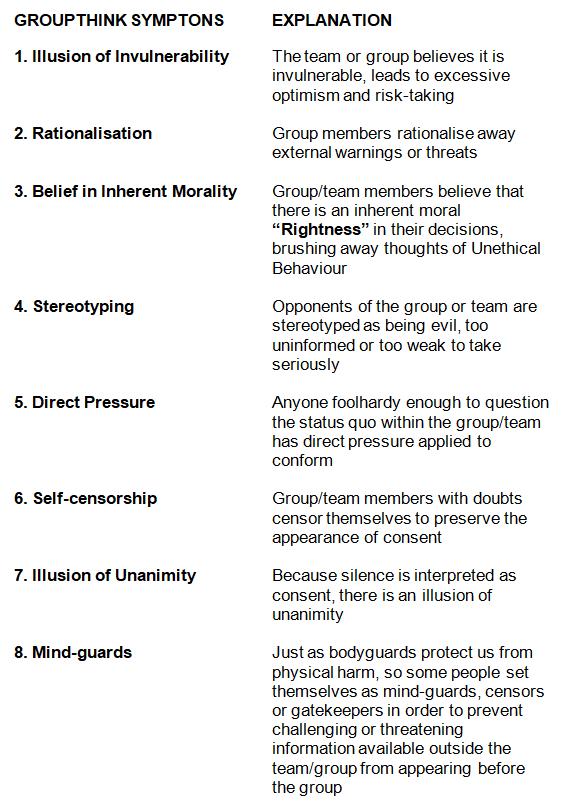
Groupthink which is attributed to the research work of Irving Janis at Yale University has become a significant concern for leaders who operate a team situation. Groupthink occurs in organisations and teams which do not have high levels of healthy or constructive conflict. This is not destructive conflict but conflict in terms of ideas, how to achieve goals and when resources need to be changed or re-aligned. A team is especially vulnerable to groupthink when its members are similar in background, experience or attitudes and when the group is particularly protected or insulated from external opinions.
In organisations with high levels of Groupthink, morale may be high, and people back each other up. To all external appearances, such groups and organisations appear to be highly effective, and also pleasant to work with. Strangely enough, however, such groups can often make bad decisions. This is because members feel that they should not speak out when they know something is actually or potentially wrong: they shut up when they should speak out.
The Groupthink phenomenon has eight specific symptoms (according to Janis). These are shown in the table below.

The above table is a useful diagnostic tool to use to guard against Groupthink. If one or more team members feel that any of the above is occurring, then the person should ideally discuss the situation with the team leader so that steps can be taken to change things for the better. This may not be a quick change however. Groupthink may be deep in the team’s way of doing things and it may take some time to change thinking and decision-making practices.
Related Resources
Critical Thinking: A Warner RESULTS Resource (PDF)
Organisational Culture: A Warner RESULTS Coaching Resource (PDF)
Organisational Defensiveness and Inertia: A Warner RESULTS Coaching Resource (PDF)



Comment here